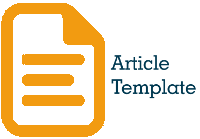Design and Evaluation of Cafe Kahuripan Booking and Reservation Website User Interface with Design Thinking
DOI:
https://doi.org/10.35457/antivirus.v17i2.2922Keywords:
Design Thinking, System Usability Scale, User Interface, Website, ReservationAbstract
Cafe Kahuripan is a business engaged in the culinary field where customers can order menus and rent a place. Currently, the process of ordering menus and renting a place is done manually with customers coming directly to the place or contacting the admin via WhatsApp listed on Facebook. However, there is a decrease in subscribers from 2021 to 2022 due to a lack of marketing which is only limited to Facebook and Whatsapp. To overcome these problems, it is necessary to design a website as a solution to make it easier for customers to order menus and rent places online. In this design, it is necessary to pay attention to a good User Interface (UI) in order to increase the level of user trust and satisfaction. The website must also have easy access that can be done anywhere. Cafe Kahuripan website user interface design uses the design thinking method. The design of the user section, there are several pages such as home, about us, menu, reservation, contact us, order status and reservation status. The design of the admin section, there is an admin dashboard, customer data, menus, orders and reviews. The result of this study is the design of the user interface for the Cafe Kahuripan website from the user side (front-end), which allows users to order menus and rent places online. The results of the usability testing which obtained an average score of 79 is a good achievement and indicates that the UI design that has been carried out has succeeded in meeting user needs. Hypothesis analysis shows that the hypothesis H0 is rejected and H1 is accepted, this is in accordance with the average score of the System Usability Scale (SUS). Respondents' feedback was analyzed and improved according to the suggestions given based on the priority level to produce a better website for users.
Downloads
References
[2] I. W. Sudarmayasa, M. F. Noor, and S. Uhai, “Standarisasi Produk Rumah Makan Khas Samarinda Di Kota Samarinda,” Sebatik, vol. 23, no. 2, pp. 633–640, 2019, doi: 10.46984/sebatik.v23i2.820.
[3] Z. E. Ferdi, F. Putra, H. Ajie, I. A. Safitri, and U. N. Jakarta, “Designing A User Interface and User Experience from Piring Makanku Application by Using Figma Application for Teens,” Int. J. Inf. Syst. Technol. Akreditasi, vol. 5, no. 3, pp. 308–315, 2021, [Online]. Available: https://www.figma.com/design/
[4] D. N. Heny, “Analisis User Interface dan User Experience pada Website Sekolah Tinggi Teknologi Adisutjipto Yogyakarta,” Conf. Senat. STT Adisutjipto Yogyakarta, vol. 2, p. 183, 2016, doi: 10.28989/senatik.v2i0.77.
[5] R. Fahrudin and R. Ilyasa, “Perancangan Aplikasi ‘Nugas’ Menggunakan Metode Design Thinking dan Agile Development,” J. Ilm. Teknol. Infomasi Terap., vol. 8, no. 1, pp. 35–44, 2021, doi: 10.33197/jitter.vol8.iss1.2021.714.
[6] E. Susilo, F. D. Wijaya, and R. Hartanto, “Perancangan dan Evaluasi User Interface Aplikasi Smart Grid Berbasis Mobile Application,” J. Nas. Tek. Elektro dan Teknol. Inf., vol. 7, no. 2, pp. 150–157, 2018, doi: 10.22146/jnteti.v7i2.416.
[7] G. Karnawan, “Implementasi User Experience Menggunakan Metode Design Thinking Pada Prototype Aplikasi Cleanstic,” J. Teknoinfo, vol. 15, no. 1, p. 61, 2021, doi: 10.33365/jti.v15i1.540.
[8] D. I. Fajriati and E. R. Subhiyakto, “Perancangan Mockup User Interface (Ui) Berdasarkan User Experience (Ux) Aplikasi Belajar Bahasa Arab Menggunakan Metode User Centered Design,” J. Tek. Inform., vol. 3, no. 1, p. 82, 2022.
[9] M. Ahsan, W. Arianto, and R. T. Murdani, “User Interface Design And User Experience Kuysedekah.Id Mobile Applications,” Smatika J., vol. 10, no. 02, pp. 109–114, 2020, doi: 10.32664/smatika.v10i02.515.
[10] H. Ilham, B. Wijayanto, and S. P. Rahayu, “Analysis and Design of User Interface/User Experience With the Design Thinking Method in the Academic Information System of Jenderal Soedirman University,” J. Tek. Inform., vol. 2, no. 1, pp. 17–26, 2021, doi: 10.20884/1.jutif.2021.2.1.30.
[11] R. P. Auliasari, H. Tolle, and D. Priharsari, “Perancangan User Experience Aplikasi Mobile Peserta Event Berbasis Sistem Dengan Menggunakan Metode Design Thinking (Studi Kasus : Dilo Malang),” 2021. [Online]. Available: http://j-ptiik.ub.ac.id
[12] W. S. L. Nasution and P. Nusa, “UI/UX Design Web-Based Learning Application Using Design Thinking Method,” ARRUS J. Eng. Technol., vol. 1, no. 1, pp. 18–27, 2021, doi: 10.35877/jetech532.
[13] R. W. Purwitasari, P. D. Y. Nainggolan, and ..., “Perancangan UI/UX Webinar Booking Terhadap Kepuasan Pengguna Menggunakan Metode Design Thinking,” JURIKOM (Jurnal …, vol. 8, no. 6, pp. 350–359, 2021, doi: 10.30865/jurikom.v8i6.3700.
[14] D. K. Safitri and A. Andrianingsih, “Analisis UI/UX untuk Perancangan Ulang Front-End Web Smart-SITA dengan Metode UCD dan UEQ,” Techno.Com, vol. 21, no. 1, pp. 127–138, 2022, doi: 10.33633/tc.v21i1.5639.
[15] T. Esti and H. Irul, Statistik Parametrik untuk Penelitian Kesehatan. Surabaya, JAwa Timur: Program Studi Arsitektur UIN Sunan Ampel JL. A. Yani 117 Surabaya, Jawa Timur Indonesia 60237, 2017. [Online]. Available: https://files.osf.io/v1/resources/deuxv/providers/osfstorage/5b684afe7e433e00150608d4?action=download&version=1&direct
Downloads
Published
Issue
Section
License
Authors who publish with this journal agree to the following terms:
- Copyright on any article is retained by the author(s).
- Author grant the journal, right of first publication with the work simultaneously licensed under a Creative Commons Attribution License that allows others to share the work with an acknowledgement of the work’s authorship and initial publication in this journal.
- Authors are able to enter into separate, additional contractual arrangements for the non-exclusive distribution of the journal’s published version of the work (e.g., post it to an institutional repository or publish it in a book), with an acknowledgement of its initial publication in this journal.
- Authors are permitted and encouraged to post their work online (e.g., in institutional repositories or on their website) prior to and during the submission process, as it can lead to productive exchanges, as well as earlier and greater citation of published work.
- The article and any associated published material is distributed under the Creative Commons Attribution-ShareAlike 4.0 International License











